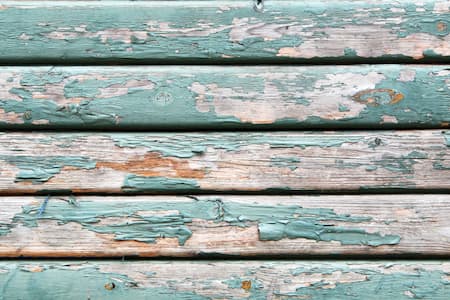Sagging & Flaking & Cracking … Oh My!

Sometimes you’ll encounter problems in the existing surface that you must fix before repainting. Some of the problems are the result of poor-quality paint. Others are the consequence of inadequate preparation or poor application techniques. Some of the most common problems are shown here, along with an explanation of their causes (so you can avoid repeating them) and solutions (so you can fix them before applying your new paint). Some of them may be rather difficult to correct, in which case you may need to call your Reno painting contractor to remedy the situation and complete your painting project.
Sagging
Sagging can be caused by:
- Applying the paint too heavily
- Painting in humid or cool Reno weather
- Thinning the paint
- Spraying with the spray head too close
Solution:
- Before repainting — Sand all glossy surfaces. Sand sags flat and reapply a new coat of paint.
- During application — Do not thin the paint or over-apply it. Two coats at the recommended spread rate are better than one heavy coat. Avoid cool or humid conditions. If the paint sags as you apply it, immediately brush it out or reroll it evenly.
Blistering
Blistering can be caused by:
- Applying oil-base paint over a damp or wet surface
- Outside moisture seeping in through your interior Reno walls
- Exposing latex paint to high humidity or moisture shortly after paint has dried
Solution:
- Remove any source of moisture, if possible. Repair loose caulking. Remove blisters by scraping and sanding, prime bare spots, and repaint with a quality acrylic latex interior paint.
Burnishing
Burnishing can be caused by:
- Using flat paint in high-traffic areas
- Frequent washing and spot cleaning
- Objects rubbing against the walls
- Low-grade paint
Solution:
- Paint heavy-wear areas that require regular cleaning with a scrubbable latex wall paint. In high-traffic areas, choose a semigloss or gloss rather than a flat sheen. Clean painted surfaces with a soft cloth or sponge and nonabrasive cleansers.
Cracking and Flaking
Cracking and flaking can be caused by:
- Low-quality paint with inadequate adhesion and flexibility
- Over thinning or overspreading the paint
- Improper surface preparation, or failure to prime the surface
- Excessive hardening and embrittlement of alkyd paint as the paint ages
Solution:
- Remove loose and flaking paint with a scraper, sand and feather the edges. Fill deep cracks in multiple layers of paint. Prime bare wood with a top-quality primer and paint with a high-quality finish coat.
Blocking
Blocking can be caused by:
- Closing doors or windows before the paint is dry
- Low-quality semigloss or gloss paint
Solution:
- Use top-quality semigloss or gloss acrylic latex paint.
- Apply talcum powder to mating surfaces to relieve persistent blocking.
Roller Marks or Stipple
Roller marks or stipple can be caused by:
- Using a low-quality roller cover or one with the wrong nap
- Low-grade paint
- Incorrect rolling technique
Solution:
- Use a high-quality short-nap roller cover and high-quality paint whose higher solids content rolls on and levels more evenly.
- Dampen roller covers before loading with latex paint; shake out excess water.
- Don’t let paint build up at roller ends. Begin rolling at a corner near the ceiling and work down the wall in 3-foot-square sections. Spread the paint, beginning with an upward stroke to minimize spatter; then, without lifting the roller from the surface, bring the roller back with a downstroke. Finish the section with light, parallel strokes.
Hopefully these techniques will help you correct existing problems and avoid future problems, leaving you to enjoy the interior and exterior of your Reno home!
